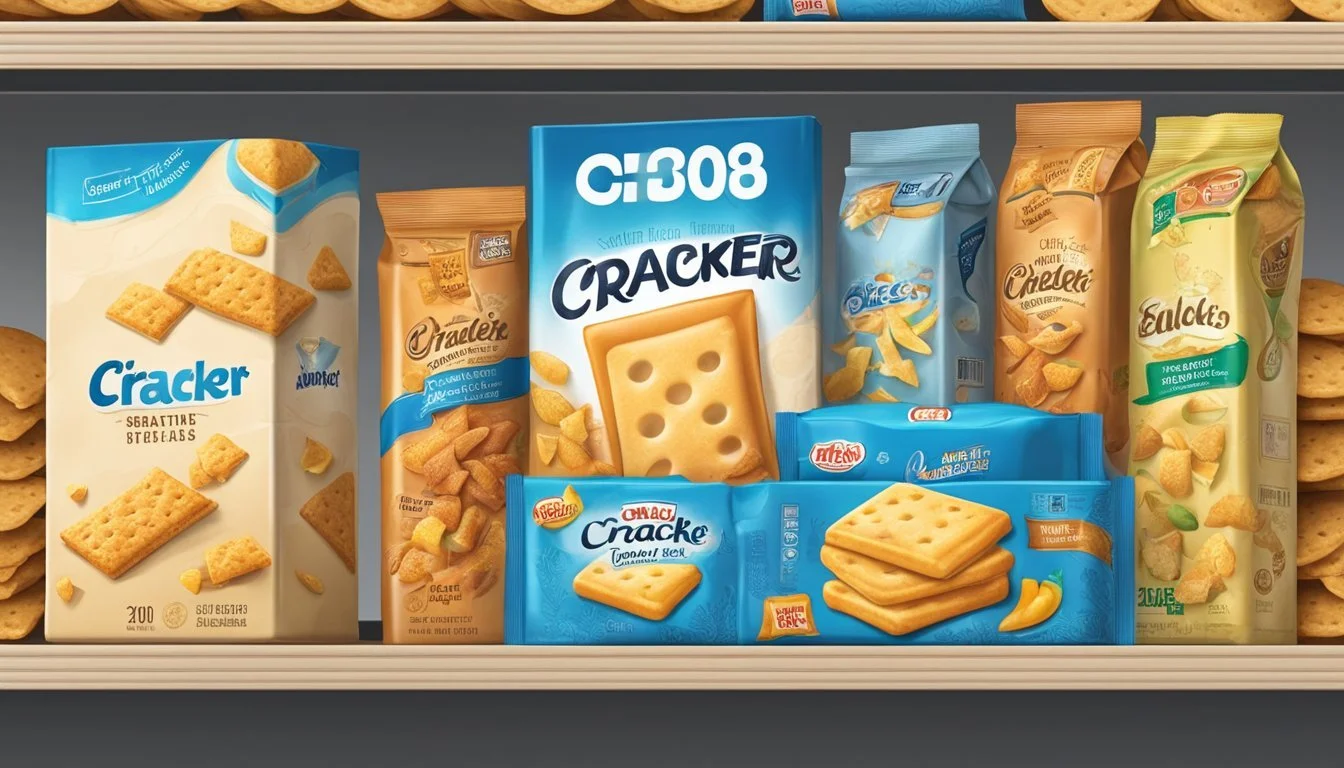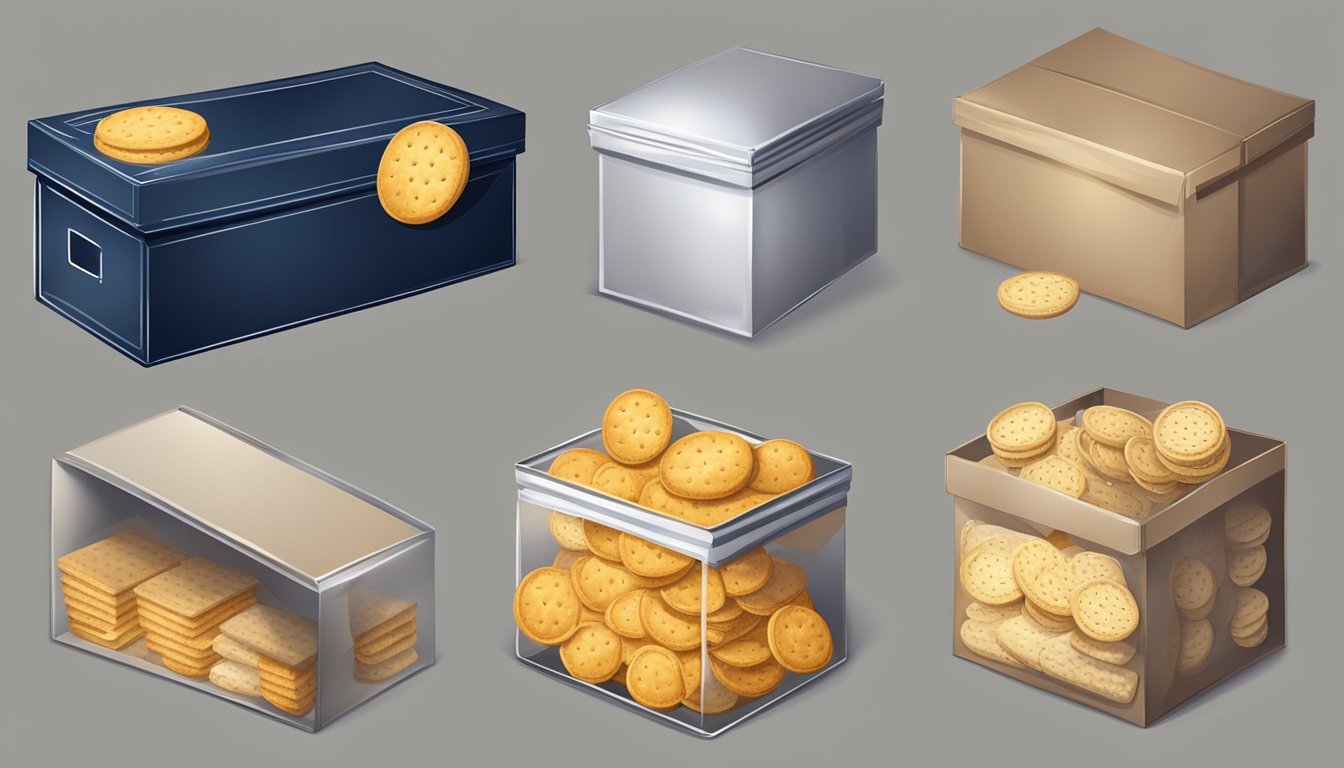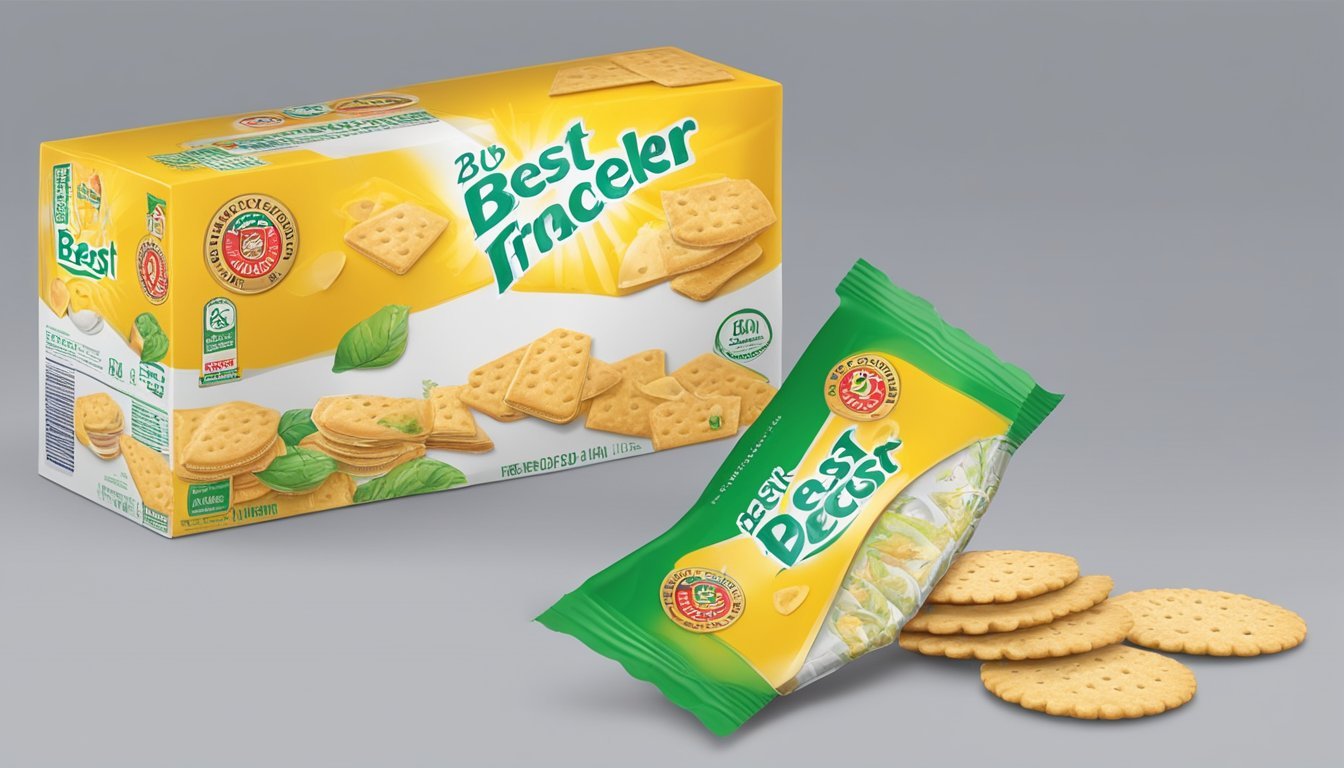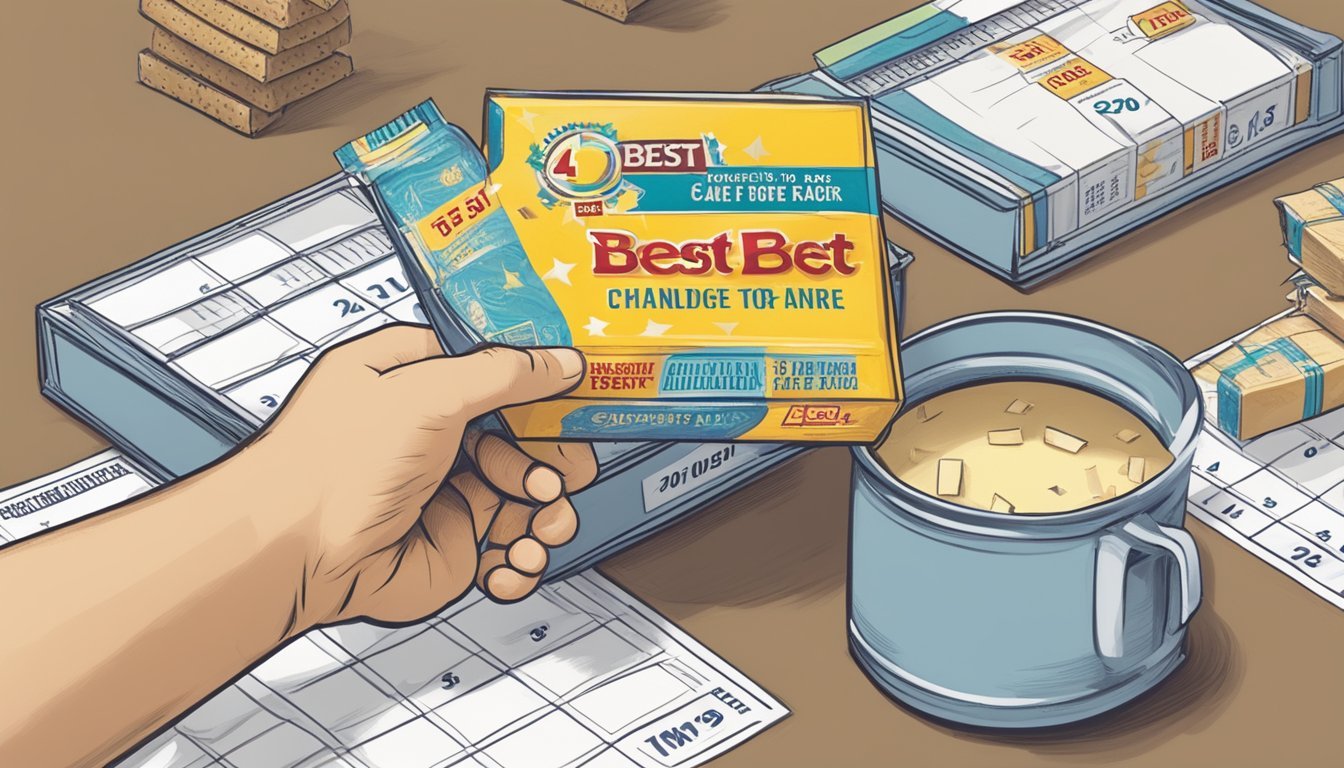How Long Do Crackers Last?
Shelf Life and Storage Tips
Crackers, a pantry staple in many households, have a reputation for longevity, often remaining edible well past their best-by date. The shelf life of crackers depends on various factors including the type of crackers, the ingredients used, and the way they are packaged and stored. Typically, crackers can last from 6 to 9 months after the packaging date if they are unopened and stored properly. After this period, they may not necessarily be harmful to eat, but their quality in terms of texture and flavor may decline.
To extend the life of crackers, proper storage is key. They should be kept in a cool, dry area to prevent moisture from affecting their crispness. Once opened, resealing them in airtight containers can vastly extend their freshness and guard against staleness. Some varieties, like saltines and those without perishable additives, can last upwards of a year when unsealed packaging is kept in ideal conditions.
Understanding the factors that influence the shelf life of crackers allows individuals to enjoy their favorite snack without compromise. While the printed dates provide a guideline for peak quality, storing crackers correctly can help maintain both their taste and texture for extended enjoyment. This knowledge empowers consumers to manage their food resources effectively, reducing waste and ensuring a satisfying snacking experience.
Fundamentals of Cracker Preservation
Preserving crackers effectively prolongs their shelf life and maintains their quality. The key factors in cracker preservation involve understanding their shelf life and utilizing appropriate packaging techniques.
Understanding Shelf Life
Crackers tend to have a shelf life of approximately 6 to 9 months when unopened. This is based on the best-by date provided by manufacturers which suggests the time frame for enjoying the best quality of the product. It's important to note that crackers can last beyond this date, but their flavor and texture may diminish. Once opened, the crackers' exposure to air, humidity, and contaminants can lead to them becoming rancid or stale more quickly, making storage conditions a pivotal aspect of their preservation.
The Role of Packaging
The way crackers are packaged directly impacts their freshness and longevity. Sealed containers are ideal for maintaining an airtight environment, which is crucial in preventing exposure to moisture and other elements that could degrade the crackers. For optimal preservation after opening the original packaging, crackers should be transferred to:
Airtight containers: These prevent moisture and air from entering, which helps in keeping the crackers crisp.
Resealable plastic bags: If an airtight container isn't available, the next best option is a resealable plastic bag with as much air removed as possible.
By adhering to these packaging standards, one can significantly extend the life of both opened and unopened crackers, ensuring they remain safe to consume and as enjoyable as possible for an extended period.
Skip the lines and order your resealable plastic bags online for a stress-free shopping experience!
Storage Solutions
To maximize the shelf life of crackers, proper storage is imperative. Temperature, humidity, and light exposure significantly influence their longevity and crispness.
Ideal Storage Conditions
Crackers should be stored in a cool, dark, and dry place to maintain freshness. A pantry or a cupboard away from heat sources is ideal. Storing them in an airtight container or a sealed bag can help keep out moisture and other contaminants. For opened packages, removing as much air as possible before re-sealing can further extend the crackers' suitability for consumption.
Pantry vs. Refrigeration
While the pantry is typically sufficient for storing crackers, different varieties may benefit from refrigeration:
Pantry: Most crackers, especially those that are unopened, can be kept in the pantry. The key is ensuring the storage environment is consistently cool and dry.
Refrigeration: In more humid climates or during seasons with higher moisture, placing crackers in a sealed container in the fridge can help retain their crispness. However, this is usually not necessary and may cause them to absorb odors from other foods.
The freezer is not recommended for standard cracker storage, as the thawing process can introduce moisture and negatively affect texture.
Factors Affecting Cracker Longevity
The longevity of crackers is swayed by both their constituent ingredients and the environmental conditions in which they are stored. Understanding these factors aids in maximizing the shelf life of crackers.
Impact of Ingredients
Crackers high in fats and oils have the potential to go rancid faster due to the oxidation of fats, especially when exposed to heat and oxygen. Conversely, those made with fewer perishables and without added preservatives typically boast an extended shelf life.
Ingredients prone to spoiling: Sugars, fats, oils, and dairy products can reduce shelf life.
Preservatives: Crackers containing preservatives may last longer.
Environmental Influences
The environment in which crackers are stored plays a significant role in determining their freshness and edibility. The presence of moisture, heat, and light can all negatively impact the shelf life of crackers.
Moisture: The primary cause of stale crackers. Keeping them in an airtight container eliminates excess humidity.
Humidity Level Potential Risk to Crackers High Increased chance of sogginess and mold growth Low Reduced risk, crackers stay crisp longer
Temperature: Crackers should be stored in a cool, dry place to mitigate the risk of spoilage.
Temperature Condition Effect on Crackers Warm May accelerate rancidity Cool Helps maintain freshness
Light: Direct sunlight or intense artificial light can lead to the degradation of crackers over time. This can be offset by keeping crackers in a dark location or opaque containers.
Light Exposure Potential Impact Direct Sunlight/Strong Light Can cause fats to spoil quicker Low Light/Darkness Helps prevent the spoiling process
Optimal storage conditions include minimal exposure to light, stable temperatures, and low humidity, all of which can be achieved by utilizing airtight containers and selecting appropriate storage locations.
Signs of Spoilage in Crackers
When crackers spoil, they exhibit signs that are detectable through changes in appearance, texture, and scent. Identifying these signs promptly ensures food safety and quality.
Visual and Textural Changes
Visual signs of spoilage: Crackers that have gone bad often display mold growth, which appears as fuzzy spots that can be green, white, or black. Staleness can manifest as a lack of sheen and a more subdued color compared to fresh crackers. Additionally, discoloration or any abnormal appearance can indicate spoilage.
Textural changes: Fresh crackers are typically crisp and snap easily when broken. When they become stale, their texture changes, and they may feel soft or chewy. If a cracker bends instead of breaking crisply, it has likely gone past its optimal consumption period.
Odor and Flavor Deterioration
Odor: A key indicator of spoiled crackers is an off odor. This can range from a musty or 'off' smell to a clearly rotten smell, signaling that the crackers should not be consumed.
Flavor: The flavor of crackers can also degrade over time. Stale crackers often have a bland taste or may taste different from when they were fresh. A sour or otherwise unpleasant flavor is a clear sign that the crackers are no longer suitable to eat.
Extending Cracker Freshness
To extend the shelf life of crackers and maintain their crispness and flavor, one must focus on how they are sealed and the use of preservatives.
Maximizing Freshness with Proper Sealing
Proper sealing is crucial to maximize the freshness of crackers. They should be stored in an airtight container to protect against moisture and other environmental factors. The sealing process includes:
After opening a package, transfer the remaining crackers to an airtight container.
Remove as much air as possible before sealing the container to minimize exposure to oxygen.
Consider the use of sealing devices or resealable plastic bags for added protection.
Online stores offer unbeatable prices for sealing devices, so don't miss out!
Utilization of Preservatives
The utilization of preservatives can significantly extend the freshness of crackers. Natural preservatives like salt and oil can help in this effort. These preservatives play a role in:
Inhibiting mold growth due to the antibacterial properties of salt.
Preventing rancidity as oil acts as a barrier against oxygen.
One should always be mindful of the type and amount of preservatives used, ensuring they are safe for consumption.
Cracker Varieties and Shelf Life
When considering the shelf life of various cracker types, factors like ingredients, packaging, and storage conditions come into play. Different kinds of crackers will have varying shelf lives depending on these elements, with distinctions between homemade and store-bought options.
Comparison of Common Crackers
Saltines: Usually have a shelf life of 6-9 months as their moisture content is low.
Graham Crackers (how long does graham crackers last?): Can last up to 6-9 months when stored properly in airtight containers to prevent moisture absorption.
Rice Crackers: (how long do rice crackers last?) These also typically last for about 6-9 months but are more susceptible to humidity.
Water Crackers: With minimal fat content, they can last a similar 6-9 months, as long as they are kept dry and sealed.
Hard Tack: Known for their longevity, these can last several years under ideal conditions due to their dense and dry nature.
Shelf Life of Homemade vs. Store-Bought Crackers
Homemade Crackers: They generally have a shorter shelf life, typically lasting about 2 weeks when stored in airtight containers because they lack preservatives.
Store-Bought Crackers: These often last longer due to preservatives and specialized packaging, with a shelf life that can extend up to 6-9 months, or even longer if the packaging remains unopened and is stored correctly.
The shelf life mentioned here can vary based on the exact recipe used, ingredients, and preservation methods in the case of homemade crackers, and packaging, preservatives used, and storage conditions for store-bought crackers. To maximize the shelf life, it is crucial to store crackers in a cool, dry place away from direct sunlight and to reseal packages tightly after opening or transfer them to airtight containers.
Safe Consumption and Health Considerations
When it comes to crackers, understanding the relationship between expiration dates and safe consumption is crucial. Essential to maintaining quality, the handling of products nearing or beyond their expiration date requires cautious consideration to prevent food poisoning.
Expiration Date and Safe Consumption
Crackers typically come with an expiration date that provides a guideline for peak quality. They are safe to consume up to this date, and often beyond, as long as the product remains dry and free from signs of spoilage. However, the consumer should note:
Fat-free crackers have a longer shelf life, tending to last at least two years if stored properly.
Crackers with fat, such as those similar to Ritz, have a shelf life of around a year or more under proper storage conditions.
A conspicuous decrease in quality, such as loss of crispness or flavor, can occur after the expiration date but may not necessarily indicate that the crackers are unsafe to consume.
Potential Risks of Stale or Spoiled Crackers
The risks associated with consuming stale or spoiled crackers are non-trivial:
Stale crackers, though not as pleasant in taste or texture, do not inherently pose a health risk and are generally considered safe to consume.
Spoiled crackers, which may exhibit mold, an off smell, or an unusual taste, should not be consumed as they could lead to food poisoning.
It's critical that consumers trust their senses—sight, smell, and taste—to determine the quality and safety of their crackers before consumption.
Creative Uses for Stale Crackers
Even when crackers lose their initial crispness, they don't need to be discarded. They can find new life and purpose in various recipes, serving as a crunchy component or a flavorful addition.
Recipes and Repurposing
Breadcrumbs Alternative: Stale crackers make for an excellent substitute for breadcrumbs. One can simply crush them and use them in recipes as a binder or crispy topping.
Crunchy Coating: Stale crackers provide the perfect texture for a crunchy coating. Crushed finely, they can coat chicken or fish fillets before baking or frying, imparting a savory taste and a satisfying crunch.
Enhance Snack Mixes: For a savory snack mix, broken pieces of stale crackers can be baked with spices and mixed with nuts (how long do nuts last?) and pretzels, enhancing the overall flavor and adding a different texture to the mix.
Casserole Topping: A layer of crumbled crackers adds a nice contrast when sprinkled on top of casseroles before baking, giving a toasty flavor to every bite.
Binding for Meatballs or Meatloaf: In meatloaf or meatballs, stale crackers can serve as an effective binder, helping to retain moisture while also adding a mild flavor that complements the meat.
The repurposing of stale crackers in these culinary applications reflects a resourceful approach to minimizing food waste while maximizing taste and texture in everyday cooking.
Purchasing and Cost Considerations
In selecting crackers for long-term storage, assessing packaging and cost-effectiveness is crucial. Buyers should focus on finding high-quality crackers at the best value while ensuring the packaging is conducive to extended shelf life.
Buying Tips and Cost Effectiveness
When purchasing crackers, consumers should look for inexpensive options that do not compromise on quality. Bulk buying often leads to better savings, but shoppers must then consider the longevity of the product. Consumers are advised to examine the packaging carefully; it should be fully sealed with no signs of damage. Avoid boxes with damaged packaging as this could indicate exposure to elements that shorten the crackers' shelf life.
For preserving quality post-purchase, storing crackers in a plastic bag or Tupperware container is recommended to keep them from going stale. The goal is to minimize exposure to air and moisture. Adhering to this practice can extend the life expectancy of the product and, as a result, increase cost-effectiveness.
Avoid the crowds and shop for Tupperware container online from the comfort of your home!
Individuals should opt for food-grade storage solutions that can be sealed tightly. Reusable zip-top bags or airtight containers are ideal for maintaining freshness for small and large quantities alike. When sealing crackers in these containers, it's recommended to remove as much air as possible to reduce oxidation.
By considering these purchasing and storage factors, consumers can enjoy their crackers for an extended period, thereby maximizing the value of their purchase.











